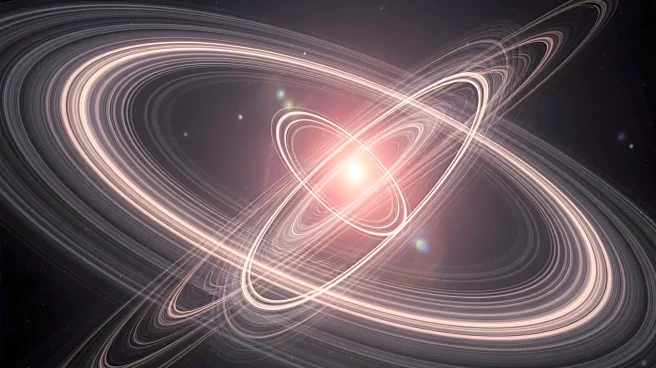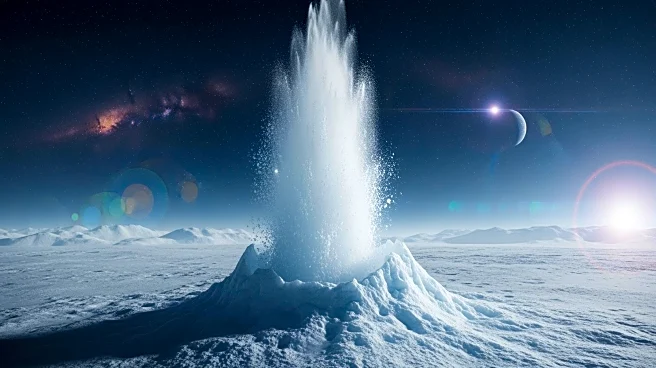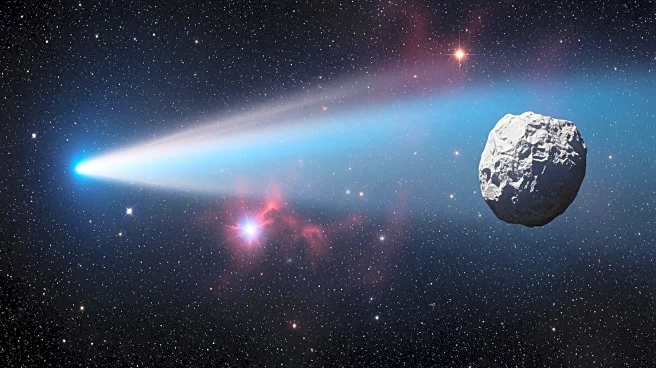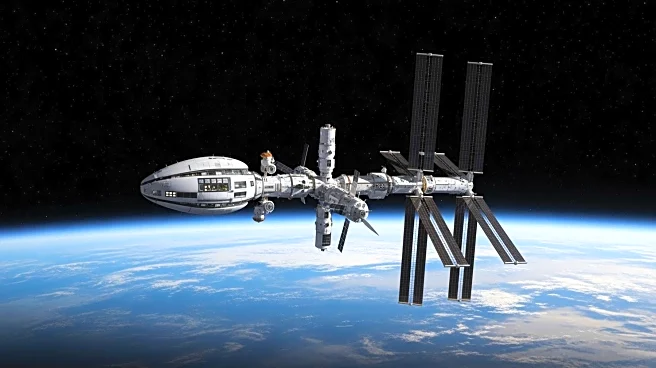What's Happening?
Recent data from NASA's Cassini mission, as published in the journal Science Advances, has identified Saturn's moon Enceladus as a promising candidate for supporting life. Researchers from Oxford, the Southwest Research Institute, and the Planetary Science Institute in Tucson,
Arizona, have discovered that heat is flowing from both the north and south poles of Enceladus, which is approximately 310 miles in diameter. This heat flow is consistent with tidal heating, suggesting a global, salty subsurface ocean beneath the moon's icy surface. The presence of water, heat, and essential chemicals like phosphorus and hydrocarbons makes Enceladus one of the most promising locations within the solar system for life to have evolved outside Earth. The Cassini spacecraft first identified Enceladus as having an active ocean in 2005 when it detected large plumes of water vapor rising through fractures in the moon's surface.
Why It's Important?
The identification of Enceladus as a potentially habitable moon is significant for the search for extraterrestrial life. The presence of a stable environment with water, heat, and essential chemicals increases the likelihood that life could exist or evolve on Enceladus. This discovery could shift the focus of future space missions and research towards exploring Enceladus further, potentially leading to groundbreaking findings about life beyond Earth. The implications for astrobiology are profound, as Enceladus could serve as a model for understanding how life might develop in environments vastly different from our own. Additionally, this discovery could influence public interest and funding in space exploration, as the possibility of finding life elsewhere in the solar system becomes more tangible.
What's Next?
Further studies are needed to determine the age of the subsurface ocean beneath Enceladus and whether it has existed long enough to support the development of life. Researchers will likely focus on understanding the moon's energy balance and how it maintains a stable environment. Future missions may aim to explore Enceladus more closely, potentially involving landers or probes designed to analyze its surface and subsurface conditions. The scientific community may also prioritize Enceladus in the context of broader astrobiological research, considering its potential to host life. As interest in Enceladus grows, collaborations between international space agencies could emerge, pooling resources and expertise to explore this promising moon.
Beyond the Headlines
The discovery of Enceladus as a potentially habitable moon raises ethical and philosophical questions about the search for life beyond Earth. It challenges our understanding of life's uniqueness and prompts discussions about the implications of discovering extraterrestrial life. The potential for life on Enceladus also highlights the importance of protecting such environments from contamination by human exploration. As space missions advance, establishing guidelines and protocols to preserve the integrity of extraterrestrial ecosystems becomes crucial. This discovery may also influence cultural perceptions of humanity's place in the universe, sparking curiosity and inspiring future generations to explore the cosmos.













